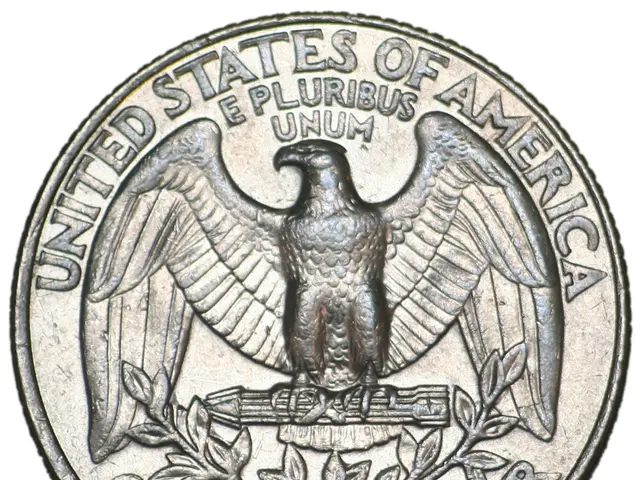During the pandemic's early stages, the wealth of middle-class and low-income Americans rose faster than that of high-income earners. From December 2019 to December 2021, middle-income households saw a 29% increase in wealth, whereas low-income households experienced a phenomenal 101% surge. In contrast, the wealthy saw a more modest 15% growth in net worth.
Despite these gains, the wealth divide between the wealthy and the poor remains substantial. In December 2021, high-income earners possessed an average net worth of $803,400, while middle- and low-income households had $204,100 and $24,500, respectively.
The improvement in wealth for the majority of Americans occurred despite economic turbulence, characterized by a decrease in average income and an increase in long-term unemployment. Despite these challenges, many Americans managed to increase their riches.
Several factors may have contributed to this growth. Firstly, the U.S. Congress passed several relief measures to help families and individuals, particularly the low-income and middle class. These measures included three rounds of Stimulus Checks totaling $3,200, an expansion of unemployment benefits, expanded tax breaks for children, and targeted aid for renters and homeowners. The surge in these programs could have aided in the wealth accumulation for many Americans.
Furthermore, real estate and stock markets performed exceptionally well during this time. Between December 2019 and December 2021, property prices increased by 31%, which boosted the equity of homeowners. Interest rates on mortgages dropped significantly, enabling homeowners to reduce their monthly payments. Meanwhile, stock prices, which had initially fallen, experienced a strong rebound.
However, even with these improvements, poorer families may still be struggling with debt. Many households and individuals likely entered the pandemic with high levels of debt, and despite the increased wealth, they may still be grappling with these liabilities.
Rakesh Kochhar, Senior Fellow at the Pew Research Center, stated that the financial gains seen during the pandemic, while significant, were not enough to lift the poorest Americans out of debt.
Typical low-income African-American households still had a negative net worth of $4,000 at the end of 2021, which is an improvement from the $10,000 deficit they had two years prior. Meanwhile, Hispanic households saw their net worth increase from a deficit of $1,100 to $0.
On the other hand, lower-income white and Asian households had net worths of $4,700 and $8,900, respectively – significantly higher than the African-American and Hispanic households.
Unfortunately, these financial improvements may not persist. Pew reports show that the economic factors that fueled the wealth improvement between 2019 and 2021 are reversing or slowing down. Income is decreasing, and household expenses are increasing, partly due to the fact that fewer savings were accumulated at the beginning of the pandemic.
In addition, the housing market slowdown and stock market volatility in 2022 suggest that the wealth boost enjoyed by many Americans may not last. Additionally, other government reports indicate that the situation for low-income Americans worsened in 2022, as poverty among children saw a significant increase.
References: *
Even as lower-income and middle-class Americans experienced financial improvements during the pandemic, many continue to struggle. The typical poor, African-American household still incurred a net debt of $4,000 as of December 2021, compared to high-income earners with an average net worth of $803,400.
The uneven distribution of wealth after the pandemic highlights the importance of economic policies that address the needs of those with lower incomes. By implementing programs that promote wealth-building opportunities, these individuals and families can contribute positively to the overall economy and help bridge the wealth gap.
In conclusion, the pandemic led to substantial financial gains for many Americans. However, without targeted policies to address income disparities, the wealth divide between the wealthy and the poor will remain a significant challenge.
Sources:
Enrichment Data:
The impact of economic policies during the pandemic on wealth distribution in the United States is complex and multifaceted. Here are the key points:
- Government Transfers and Poverty Reduction:
- Income Support Programs: COVID-19 led to unprecedented policy interventions, including Stimulus Payments, expanded unemployment insurance, and the Child Tax Credit (CTC). These programs significantly reduced child poverty, with the expanded CTC having the largest impact in 2021, lowering it by 3.9 percentage points compared to a 2.9 percentage point reduction without it[1].
- Saving and Borrowing Behavior: Families who received large income transfers saved some of this additional income, causing income to increase more than consumption. This behavior is evident in data showing a jump in assets for households with fewer resources, particularly following the second and third rounds of Economic Impact Payments (EIPs)[1].
- Wealth Disparities:
- Tariffs and Consumer Spending: New tariffs disproportionately affected lower-income households, contributing to a bifurcation in U.S. consumer spending. The top 20% of income distribution accounts for nearly half of spending, masking pressure at the lower end of the income distribution[4].
- Income Inequality: The pandemic temporarily reduced poverty but has also contributed to rising income inequality. The income growth was more concentrated among those who were well-off to start with, widening the wealth gap[4].
- Housing Affordability:
- Cost-Burdened Households: The pandemic exacerbated the affordable housing crisis, with 42.9 million households spending more than 30% of their income on housing costs. Low-income renters, earning less than $30,000 annually, continue to face the most significant difficulties, with 83% of such households being cost-burdened[2].
- Middle-Income Renters: Middle-income renters also experienced significant increases in cost burdens, with 70% of those earning $30,000 to $44,999 and 45% of those with incomes between $45,000 to $74,999 being cost-burdened in 2023[2].
- Workplace Dynamics:
- Remote Work: The pandemic highlighted the disparity in remote work opportunities. Lower-income workers were less likely to have jobs that can be done from home, making them more vulnerable to job loss and coronavirus exposure[5].








